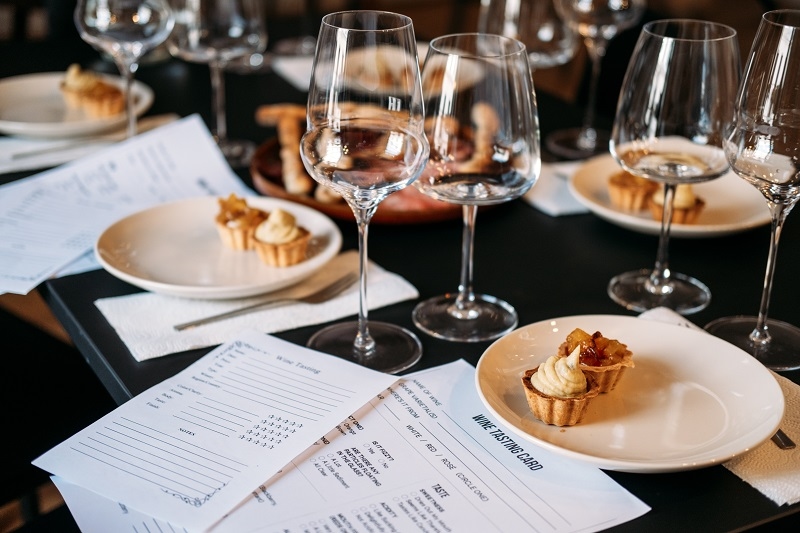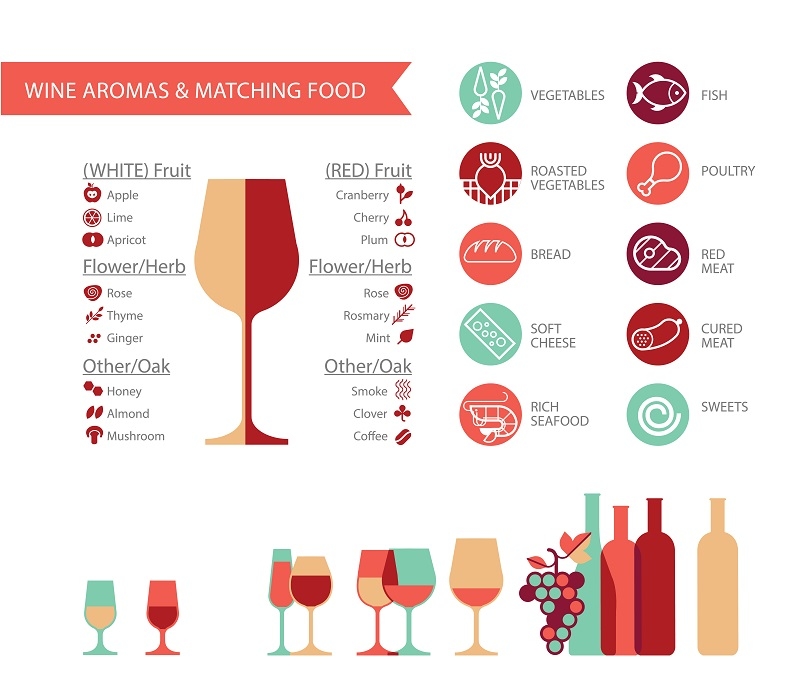
If you are curious about the world of flavors, a good wine and food pairing guide is exactly what you need. It is not about following the rigid rules, but is about understanding how wine and food naturally complement each other.
Whether you are reading a basic wine and food pairing guide or looking into the food and wine guide to perfect pairings, balance is extremely important.
Balancing this combination can improve the meal and not overpower it. This guide will assist newcomers and even seasoned hosts to find simple and reliable ways to create a top-notch wine and food pairing.
Pairing food and wine may sound complicated, but it is not that tough. Beginners should look to create a combination that offers a smooth and memorable experience.
Here are a few easy starting points from a beginners guide to wine and food pairing:
Lighter dishes go well with lighter wines, whereas bold dishes need bold wines.
Creamy pastas go well with buttery Chardonnays and acidic wines can cut through rich and fatty dishes.
The sauce can define the dominant flavor of the food. Therefore, it is a smart move to pair the wine with the taste of the sauce.
High-tannin wines like Cabernet Sauvignon combine perfectly with protein like a steak or hearty mushroom dish.
These are not guidelines that have to rigidly follow, but these are the basics that you must know to create the perfect wine and food pair.
Some combinations are so time-tested, they’ve become classics. Here are several examples from the food and wine guide to perfect pairings that consistently impress guests and deliver on taste:
A full-bodied red balances the richness of beef or lamb and wine pairing is perfect.
Crisp whites like Sauvignon Blanc brighten the flavors of chicken or white fish, offering clean, sharp contrast.
The acidity and bubbles of sparkling wine cut through salt and fat, making chips, popcorn, or fried appetizers pop.
Spicy curries or dishes with heat balance beautifully with slightly sweet wines like Riesling.
Fresh, fruity rosé fits perfectly with charcuterie, salads, and fresh cheeses under the sun.
Even when unsure, starting with these matches can guide any host through a seamless dining experience.
Unlike fine dining rules or sommelier lingo, a basic wine and food pairing guide should feel approachable. The idea is to simplify—not overcomplicate—the moment. At home, there are three elements to focus on: balance, contrast, and mood.
Let’s break it down:
Heavy meals need heavier wines, whereas lighter dishes prefer more delicate options.
A tomato-based pasta pairs beautifully with a high-acid wine like Chianti or Pinot Noir.
Rich cheeses or marbled meats reduce the dryness of tannic wines.
Blue cheese and dessert wines are unexpectedly brilliant together.
Make sure neither food or neither the wine should dominate the other.
These are simple enough to try during a casual dinner but flexible enough to scale up for special occasions.

Instead of guessing pairings dish by dish, consider planning the entire meal with wine in mind. This food and wine pairing guide goes step by step, following the order of a classic meal:
By following this rhythm, the meal unfolds smoothly, with each wine enhancing the moment.
Even with the best intentions, pairings can sometimes fall flat. The good news? A few small adjustments can fix most problems.
Some of the common mistakes while pairing wine and food are as follows:
Temperature affects flavor more than expected. Chill whites but don’t freeze them. Slightly cool reds before serving.
Just because it is a ‘classic’ pairing doesn’t mean everyone at the table will love it.
Creamy dishes want creamy wines. Crunchy dishes want something acidic or sparkling.
The wine and food pairing guide are not a strict rulebook. It’s a compass—meant to guide, not restrict.
Inexperienced hosts sometimes think they need to impress with exotic wines or obscure recipes. But the reality? Simple meals with thoughtful pairings are often the most memorable.
Here is why simplicity works:
The basic wine and food pairing guide isn't just for beginners—it's a tool for anyone who wants enjoyable meals without stress.
Final Thoughts
At the heart of it, the best meals are about more than food or wine. They’re about connection, ease, and those small moments that unfold naturally. A good wine and food pairing guide doesn’t overcomplicate that—it makes it easier to find joy in the ordinary.
As long as one listens to what the dish is saying and lets the wine respond, the story will always have a delicious ending.
This content was created by AI